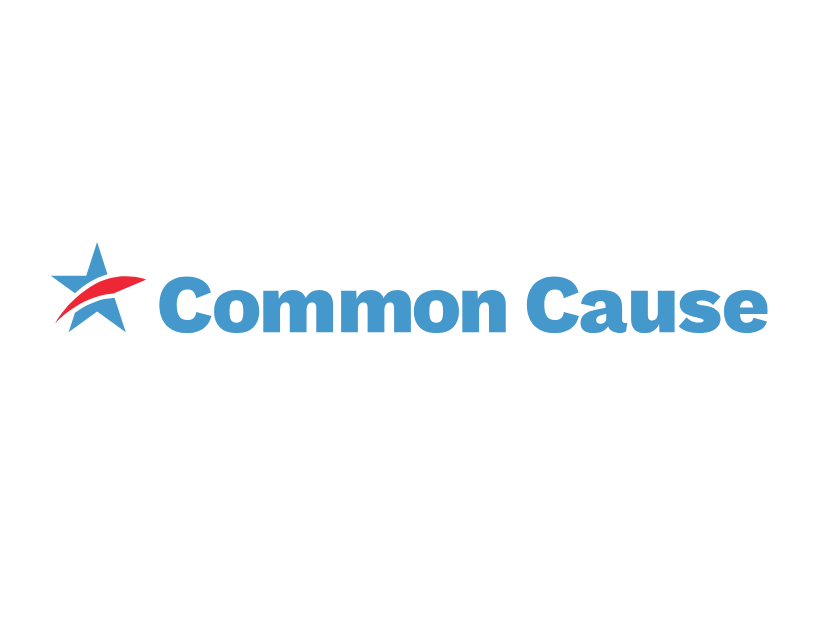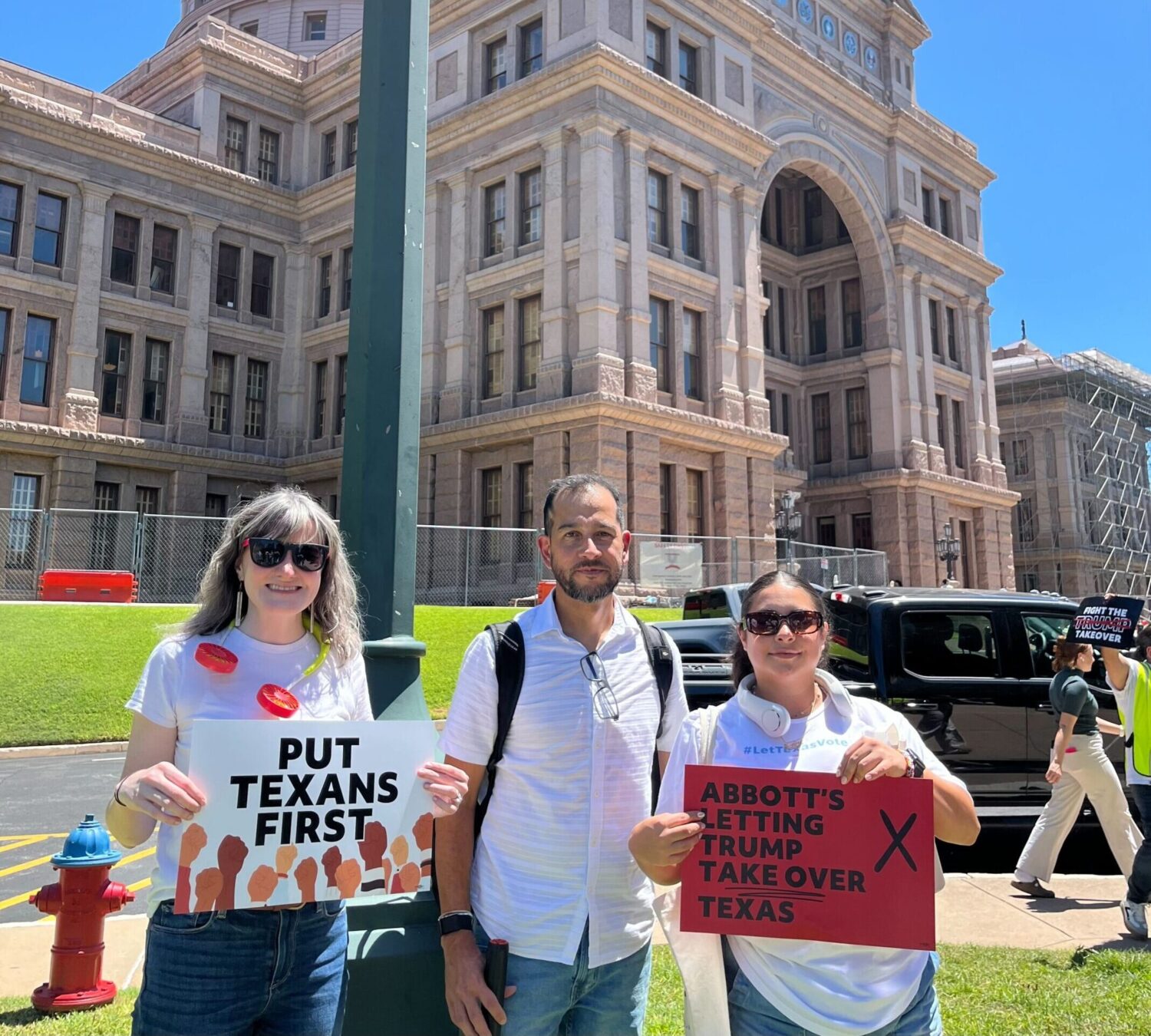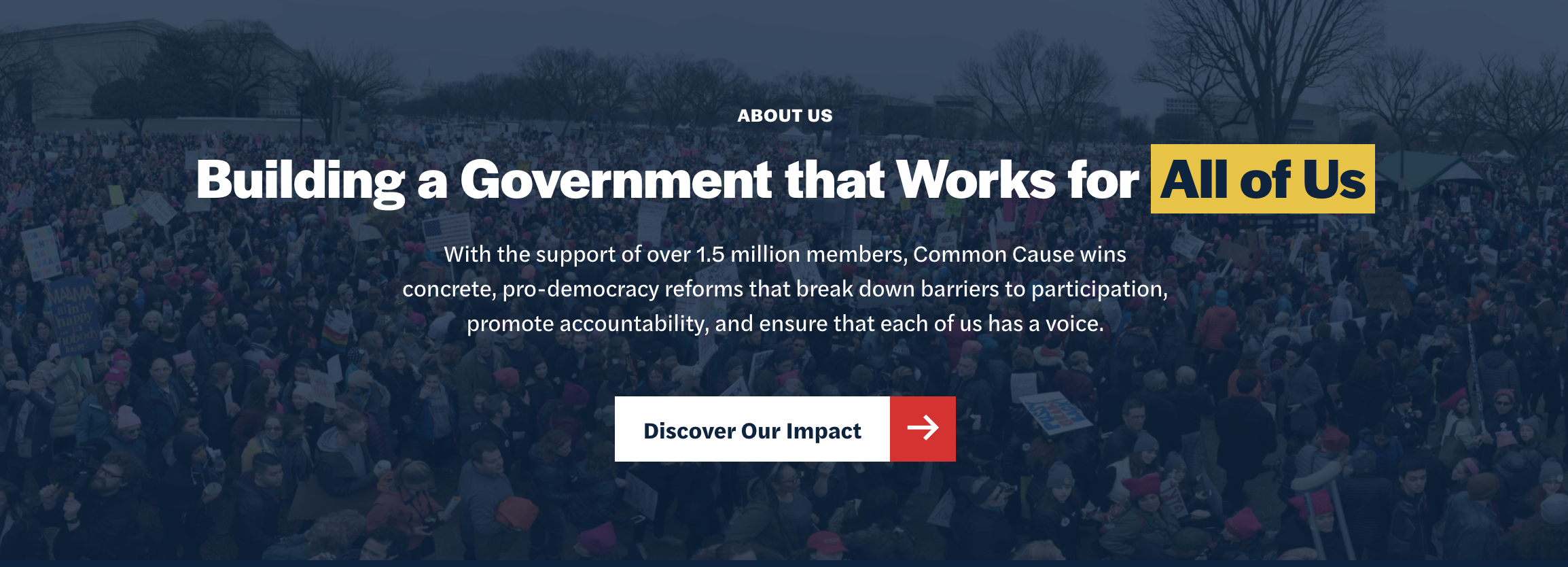
In September 2025, Common Cause sent an email to its list with the subject line “Common Cause is not for sale”. Even among the dozens of fundraising emails activists receive every day, this one stood out.
It told the story of a recent incident with one of the organization’s major donors, California billionaire Charles Munger Jr., who had now taken a stance counter to Common Cause’s on California’s attempt to counterbalance Texas’s pro-GOP gerrymander.
In response, Common Cause returned a sizable donation from Mr. Munger and — this is the key — decided to share this decision with its email list. From that email:
![So, we wrote to Mr. Munger, demanding that he remove our name from his mailers and returning a $200,000 contribution we received from him last month to support our voter education work. [2]
That’s serious money – especially for an organization like Common Cause, and especially when we’re already stretching every dollar we’ve got as American democracy faces truly unprecedented threats.
But Common Cause is not for sale. Our principles, and the mission that you’ve entrusted us with, must always come first.](https://actionnetwork.blog/wp-content/uploads/2025/10/Screenshot-2025-10-21-at-3.14.05-PM.png)
They concluded the email with a donation appeal to help close that funding gap. It was an unorthodox move, revealing the inner workings of the organization to its list of supporters, but it paid off. The email raised several times more than the baseline, and it reinforced Common Cause’s unimpeachable commitment to its values.
I spoke with Common Cause’s Digital Director, Jack Mumby to learn more about the decision to run with this messaging, what he learned from the experience, and how other organizations can follow Common Cause’s example.
JEFF: “Common Cause is not for sale.” Tell me about that line and the email it came from. What situation was the organization dealing with at the time?
JACK: My involvement obviously began after the decision was made. This was a leadership level decision. But once the decision was made and I heard about it, I really pushed hard for bringing our members into it because it is a perfect opportunity to show something we’re always telling people, which is that we are member-led, grassroots, accountable to ordinary people like you, not random, faceless billionaires.
We chose to lean in on our values here, and we obviously want to communicate to our members and give them a chance to participate and help make this a — this isn’t a term I use in the email — financially viable decision. $200,000 is real money to us. That’s like multiple staff roles.
“Within 72 hours we made back in online donations the amount that we returned.”
So I was not sure how it would perform. There’s an argument to be made that this is way too inside baseball, focusing on us when the world is collapsing around us, but I think in the environment we’ve been operating in, especially after the 2024 election, online donors are a lot more discerning with their money. People are less willing to just give to any random email program in their inboxes asking them for money. So when you have an opportunity to actually demonstrate [why you deserve their money], you really want to go hard on it.

The top line, the success here is within 72 hours we made back in online donations the amount that we returned. It is a real testament to the fact that we have this grassroots force of people who are making phone calls [to politicians], and they’re the same people who are responding to our action alerts about the shutdown. There are people who are getting involved in state-level campaigns for better democracy, and it’s also people who are volunteering as election protection, nonpartisan poll monitors. And not every single one of those people gives, but people see their contributions to Common Cause of time and of effort and of money as investing in the political change they want to see. One of those changes is a government where ordinary folks are calling the shots, not just a handful of rich people, so when we can dramatize that in such a stark way, that’s the emotional experience we’re going for. I think we succeeded.
Oh, definitely. What sorts of takeaways do you carry forward from this?
One is that if you are the lucky digital strategist who gets asked questions like this, if your organization is considering doing something bold that lets you show, not tell, what you’re all about, tell them ‘Yes, do it, and I will turn it into money.’
“You always have to be reiterating, here is how we are different from everyone else you’re hearing from. Messaging-wise you can tell people that, but when you get a chance to show it, that’ll stick with people.”
I almost bumped this for calendar space. I tested it, and that’s number one. Always test, always decide based on data. I’ve been doing this forever, and I could have gotten this one wrong.
Members are looking for bold action. My contribution was making it a member-facing play, and that’s the part that paid off for us.

And I do think the fact that it was an actual goal — I’m pretty sure this is the first explicit dollar amount fundraising goal I’ve put in an email in as long as I can remember. I’ve tried, and they don’t really work when they’re fake and everyone knows they’re fake. This was a specific dollar amount rooted directly in the practical reality of running the organization.
Lastly, every email you send is going to be someone’s first email from you. So you always have to be reiterating, here is how we are different from everyone else you’re hearing from. Messaging-wise you can tell people that, but when you get a chance to show it, that’ll stick with people.
Thank you Jack! I think people will learn a lot from this example.
Also, if anyone in the space wants to reach out and chat with me, my calendar’s always open. I am always happy to talk shop. Jack@commoncause.org